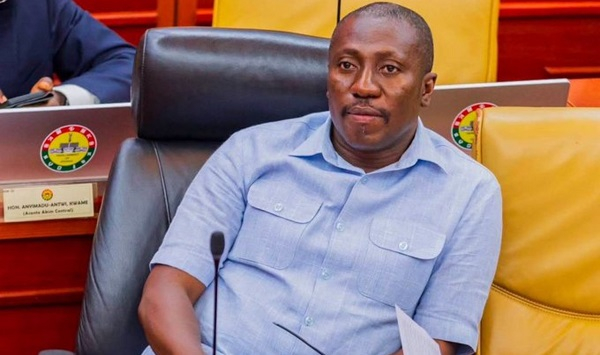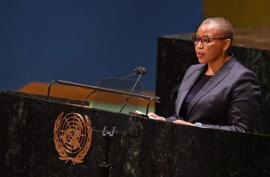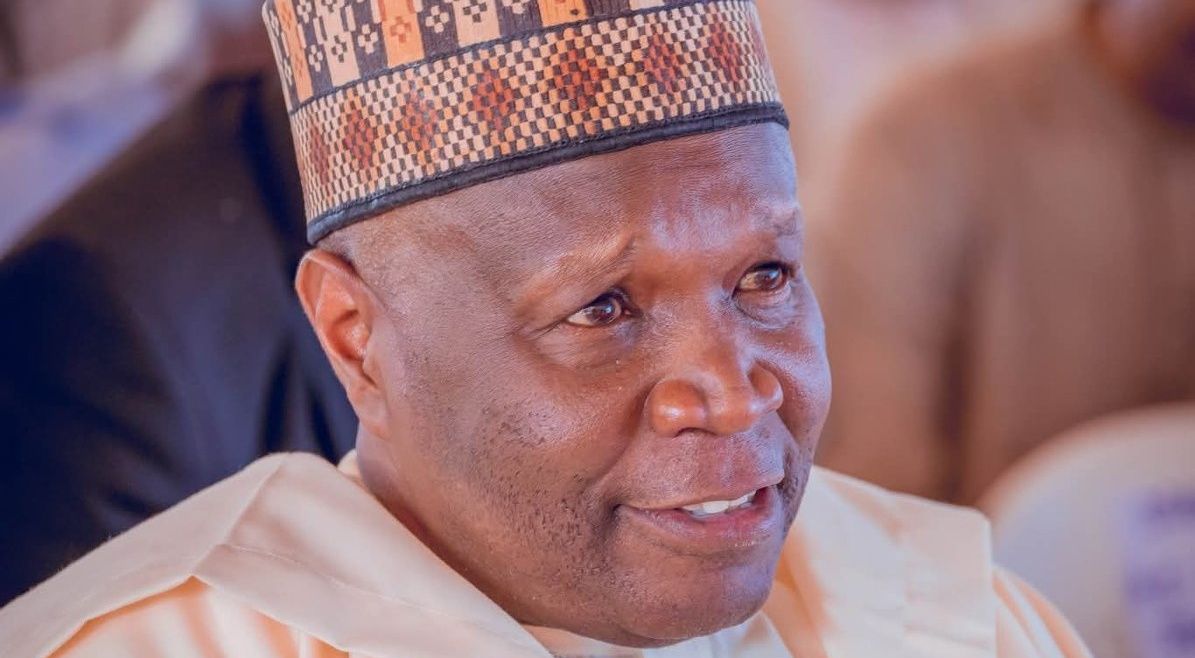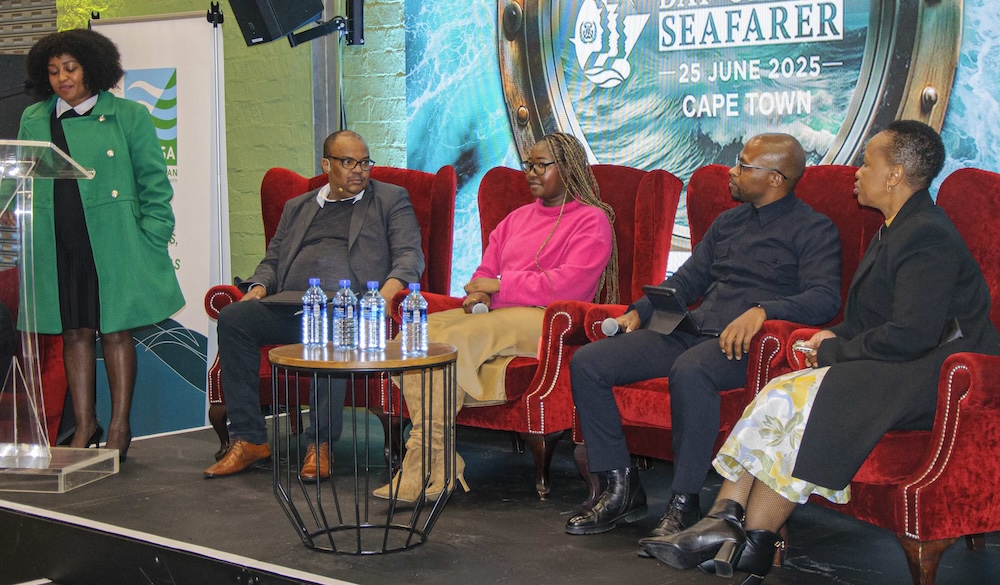South Africa is an interesting country and I had the pleasure of listening to Adrian Gore, the leader of Discovery, on a recent BizNews podcsat.
He correctly talks about staying positive against adversity. And he concludes that sentiment matters. His point is well made by Albie Sachs who said when the parcel bomb tore his arm and extracted his eye from its cavity, he, Sachs proclaimed that at last he was free. Because what he feared the most happened and liberated the fear he had harboured. This is the core difference between Gore’s sentiment and Sachs’ freedom.
The poverty and inequality that afflicts South Africa is real and what Sachs was exposed to as danger was not sentiment and it is the same danger that the South African poor face today in terms of access to health, education, jobs, water, and electricity. This is what Albie Sachs says. He argues that we have secured South Africa the land mass but have we secured the society…
So, when Gore argues for sentiment and becomes equivocal on access to health care, he actually says the poor can wait even up to twenty years before they can have access to this very basic service that the lifestyle disease diabetics and heart attack prone rich are exposed to. Yet we have seen how Traore of Burkina Faso said the poor cannot wait and within two years deployed the Burkinabe resources to make food production, road construction, schools, and health available by accessing and deploying the mineral wealth of Burkina Faso. Traore did not only secure the land mass of Burkina Faso but he secured the society. Sentiment amongst the Burkinabe is real. Sentiment amongst South Africans was once real when the doors of learning opened for the youth, housing got accessible, mothers accessed and attended clinics so that their babies can be delivered in safe and secure spaces. These gains have been at worst reversed and at best not progressed.
Under those circumstances what kind of sentiment should 90% of the population have? A striking statistic from the recently released income and expenditure survey is that only 13.7% of blacks are in the top quintile and 86% occupy the lower quintiles, with fifty percent of them on the two bottom quintiles. Compare this to 73% amongst whites who occupy the top quintile and less than ten percent occupying the bottom quintile. Now these people are told to wait because sentiment is crucial. This theory of sentiment runs through the Medium Term Development Plan (MTDP) 2024-2029.
South Africa’s asset base is built on exploitation of 90% of the population and this is what Traore put a stop to and paid all they owed to the IMF so that they are not beholden by foreign capital when they have an asset base. In under three years, Burkina Faso did what is liberating and generating not sentiment for the Burkinabe but material benefits of roads, onions, wheat, schools, and health. It is not the twenty years that Gore talks about for universal health insurance. The decision is anchored in the deployment of the god given resources to the Burkinabe for their use. That is substantive democracy and that generates positive sentiment.
I pick eight points in some of the issues raised in the MTDP 2024-2029 and I numerate these below, undertake a summary analysis and test the veracity of what the statements imply to test whether we are all about sentiment or substantive freedom for the society Sachs desired.
For instance, the MTDP reads “The Development Bank of Southern Africa (DBSA) and World Bank have estimated that between R4.9 trillion and R6.5 trillion in infrastructure expenditure will be needed to close the SDGs gap between 2022 and 2030 respectively, i.e., 2% to 3% of GDP annually.” My question is: Is this R4.9 to R6.5 trillion an annual gross fixed capital formation over the period and how does it as a statement relate to 2-3% of the GDP when basically what this implies is about 30% of the GDP invested annually? Yet only R900 billion has been allocated for the three years—which is but 5% of the GDP instead of 25% at the minimum of the GDP. Or will sentiment make good the shortfall of 20 percentage points?
The numbers of the Statistician-General have not shown any fibre of evidence to this claim that says, “Since its establishment in October 2020, the Presidential Employment Stimulus (PES) has created earning opportunities for more than two million participants through various programmes.” When the President starts producing his own numbers and deviates from relying on a competent legislated national authority on matters’ numbers, no amount of spin will generate any sentiment. The PES numbers do not show evidence of existence in the quarterly labour force of the Statistician-General. If the totals are anything to go by, the attribution of the flat numbers in the QLFS to PES is a figment of imagination and sentiment. When a national document of significance avoids the robustness of numbers and hankers on sentiment it implies, we have hardly appreciated the gravity of not only crisis but its existential implications so well-articulated in the Indlulamithi scenarios, especially that of the Vulture Nation that we have graduated into.
A connective word in the paragraph on transitions in education cannot be additionally unless it is intended to mislead or create a false sentiment. The right connective word should be “in contrast and not additionally”. This is how the paragraph reads, “Despite the challenges faced, the percentage of individuals aged 20 and over who completed Grade 12 increased from 28.9% in 2011 to 37.6% in 2022. *Additionally*, the proportion of people who completed post-school education rose from 11.7% in 2011 to 12.7% in 2022.” The problem is that if the progression ratios is currently at 37.6% up to matric which is a ten percentage points from where it was in 2011, how can a glaring contrast of only one percentage point from a debilitating low base of 11.7% be a positive measure when its progression from a preceding 37.6% only increased by a corresponding one percentage points? The censuses of 1996 to 2022 show a negative progression ratio for blacks and coloureds and when there is a miniscule percentage point rise, that can only be attributed to whites and Indians and definitely not blacks and coloureds.
The fourth point represents a major policy failure which does not acknowledge the failed family system of South Africa because of apartheid and this cannot be fixed by sentiment. It requires putting resources and acknowledging that the 73% top quintile generated out of years of white privilege and 20%, 40%, and the 13% of the black privileged have a responsibility to contribute to solving this problem. Government instead chooses to throw the problem back at society as though NFSAS has political authority as it says “NSFAS only supports students from families with annual household incomes below a certain threshold. As a result, students from households with incomes slightly above this level often find themselves excluded from funding opportunities.” Here is where our sentiment driven privileged fail to read and focus on the evidence for meaning. That 60% of the fathers claim to have married against 32% of mothers is a statistic that only myopia can be the cause of not realising what it realistically implies and the policy document is so myopic and suffices only to provide such lame excuses. Part of the consistent gender-based violence is created by this schizophrenic conjugal arrangements. Whilst government cannot preside over the bedroom, matrimony and matters of the heart, when the consequences of such matters tear at the soul of society then the state has to intervene. Not with lame excuses and sentiment. Gender-based violence is real.
As a corollary to this poor argument which reads “any TVET programmes are not adequately aligned with the skills needed by the economy. Some TVET programmes struggle with low enrolment due to their lack of popularity”. The true problem is dismembering training from SOEs such as Eskom and choosing to privatise them instead of assigning them a public duty of human resource development, but instead creating TVET institutions as stand-alone entities that are not organically connected to the development agenda. No amount of sentiment will generate this critical intervention. Furthermore, an analysis, I undertook as regards employability of current TVET graduates yawns downwards relative to those who got qualifications pre-1994 in these institutions. The skewness in choices made between technikon is obvious however, that choice emanates from prospects of poor employment outcomes. The gradient of the two for those qualified pre-1994 remains constant but yawns widely post 1994 graduates reflecting employer preferences. They would not employ someone from Pali Technikon but would employ one who went and got chiselled by Eskom or Spoornet. That was the power of that human resource training value chain. We lost it when we started looking at the so-called core business and dismantled that ecosystem. The document may not be explicit but in action we saw what happened to the weakening of Eskom and the patterns of rescue that do not use our own pensions. I of course would be damn scared if government approached my pension, but they have already done so through the two pot system which has undermined the power of aggregation across time. This is serious poverty of thought. As compatriots let us confront ourselves on these matters that I see as serious policy missteps.
This statement is correct: “As in many other sectors, the responsibility for public healthcare was divided among a range of formerly separate institutions. Apartheid administrations were responsible for healthcare in the former Bantustans, while provincial administrations provided services to different racial groups through different institutions.” However, its interpretation is totally wrong in the fact that it tries to escape the real responsibility for failure today. About twelve years ago the ministry of health was undermined when it sought to implement community health workers who would have prepared for a successful national health insurance infrastructure which now as Gore argues should be allowed to kick in after two decades. Dr Motswaledi was besmirched and pitted against the community health workers he brought on board in 2014. In full knowledge that apartheid was discriminatory, Motswaledi’s intervention was reading South Africa for National Health Insurance and confront that malaise of apartheid. The real reason is that treasury sought to turn itself into a policy centre on matters best dealt and presided over by the health and planning ministries. Apartheid has been thrown in here as a lame scapegoat. If we fail to be truthful to our own shortcomings and inhibitions then we shall chase the ephemeral sentiment.
The document makes a lame and forgetful reference to electricity: “Access to electricity and safe water has grown rapidly. Electricity access is currently between 80% and 100% across almost all municipalities (see Figure 2.8).” It is failing to confront a yet to be told total policy failure on energy where the people in leadership exchanged South Africa’s energy sovereignty for a JET Trojan Horse whose owners have abandoned it. The public looks to the US and then to German and EU only to be met by a cacophony of incoherent messages whilst South Africa carry the burden of swallowed line, sink, and hook of $8.5 billion loan to the World Bank and so-called donors. Marokane and Nyati went into Eskom and did what Koko and Molefe did and loadshedding is gone. We still have to bring to book those who commissioned the closure of Komati and left families there destitute. The MTDP hardly addresses these policy missteps that have directly impacted lives and livelihoods. Gore wants to embrace the achievements of Eskom as part of their intervention. To public knowledge business was busy pushing for the green sentiment. We should not and cannot be fooled. The number of imports of solar panels imported eroded our forex and contributed zero to production but led to grid instability and payment to green lords whether their electricity is used or not. If this is sentiment, it is an expensive one. The MTDPS does not pay attention to some of the economic trade-offs in critical areas such as energy.
Whilst the MTDPS refers to Indlulamithi Scenarios 2035, which is a beauty contest of the ugly, it is not clear in the MTDPS as to what path will enable the country to grow by even 3% by 2029—I have searched for items on economic policy change, I have failed to see them even when I applied a fine lens and how this will be achieved has remained an economic policy mystery especially in the context of a beauty competition of the ugly.
Dr Pali Lehohla is a Professor of Practice at the University of Johannesburg, a Research Associate at Oxford University, a board member of Institute for Economic Justice at Wits, and a distinguished Alumni of the University of Ghana. He is the former Statistician-General of South Africa.









